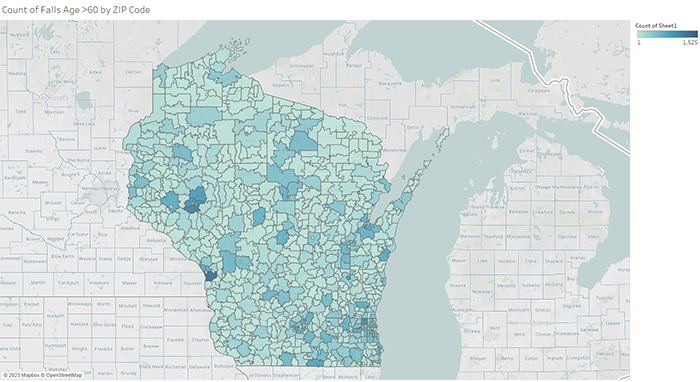Fast Facts from the WHA Information Center: Falls

According to a recent Wisconsin Emergency Medical Service (EMS) report, falls are the leading cause of death and injury in 2022 for the state of Wisconsin. EMS responded to over 130,000 calls related to falls. The Centers for Disease Control and Prevention report that one out of four people aged 65 and older falls each year. They state each year three million older people are treated in the emergency room because of an injury due to falling. Falling once doubles the chances of falling again. Wisconsin currently has the highest number of fall death rate per 100,000 in the United States. Wisconsin Emergency Medical Services found that the responses to falls are increasing by almost 10,000 each year. In 2022, falls consisted of 18% of all 911 ambulance runs. More falls were found among older adults who live in private residences versus a nursing home.



The WHA Information Center analyzed falls data from January 2018 to March 2023. Females aged 60 and older were found to have a higher visit count than males. They were seen in hospitals 57% of the time while males are seen 42% of the time. Emergency rooms saw the highest visit counts, followed by inpatient facilities. The average age of patients visiting for falls aged 60 and older is 78 years of age. Age group 81-90 had the highest visit counts in comparison to other age groups. A ZIP code in La Crosse County has the highest number of visits for falls in those over 60 years. Two ZIP codes in Eau Claire County have the second highest number of visits for falls.
Here are some conditions from the CDC that make it more likely to fall:
- Lower body weakness
- Vitamin D deficiency (that is, not enough vitamin D in your system)
- Difficulties with walking and balance
- Use of medicines, such as tranquilizers, sedatives, or antidepressants. Even some over-the-counter medicines can affect balance and how steady you are on your feet.
- Vision problems
- Foot pain or poor footwear
- Home hazards or dangers such as broken or uneven steps, throw rugs, or clutter that can be tripped over.